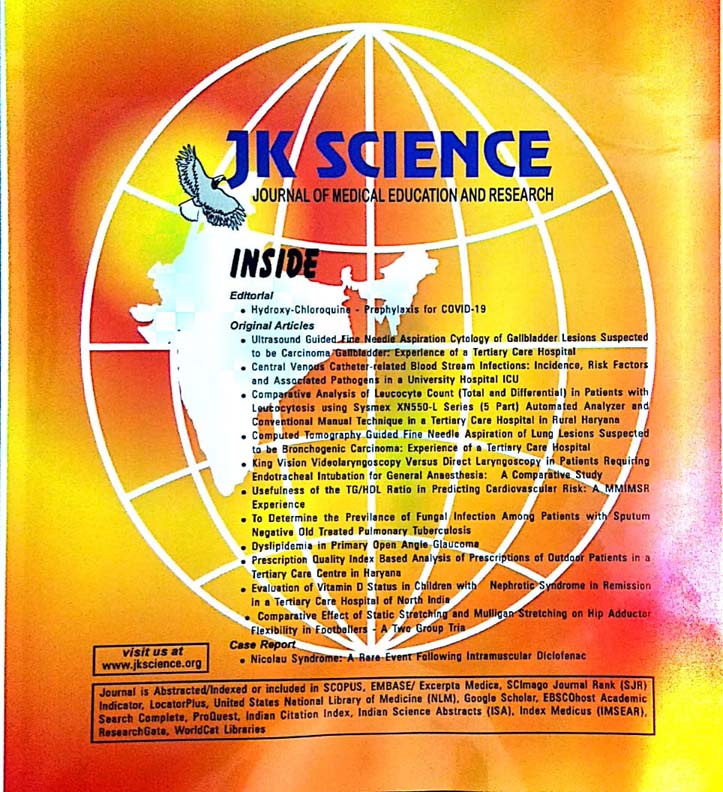Isolation Rate and Antifungal Susceptibility Patterns of Bloodstream Candida Species in a North Indian Hospital Setting between 2017-2021
Keywords:
Candidemia, Candida albicans, Non albicans candida, Antifungal susceptibilityAbstract
Background: Candidemia is an increasingly important healthcare-associated fungal infection that is associated with high morbidity and mortality. The epidemiology of candidemia varies according to geographical region, period and the population involved. An increased incidence of non-albicans candidemia has been reported in recent studies.
Aim: To study the prevalence of Candida species and their susceptibility profile over a period of five years (2017– 2021).
Material and Methods: This retrospective study was performed in the microbiology laboratory. Specimens were collected and culture was performed using the BacTAlert3D / BacTec culture system. All the isolates were identified and their antifungal susceptibility testing was performed.
Results: Year-wise positivity rates of candidemia were 0.85%, 0.68%, 0.73%, 0.82% and 0.71%. Majority of the isolates were from the age group 51-60 years with male predominance. Candida tropicalis was the most common species followed by C. albicans & C. parapsilosis. Candida isolates showed good susceptibility to Amphotericin B & Echinocandins whereas increased resistance to azoles (20-30%) was observed in C. tropicalis & C. parapsilosis.
Conclusion: The emergence of a few Candida species, which were not previously isolated is alarming. NAC being more resistant / intrinsically resistant to fluconazole strengthens the need for antifungal susceptibility testing on a priority basis.
Downloads
Downloads
Published
How to Cite
Issue
Section
License
Copyright (c) 2025 JK Science: Journal of Medical Education & Research

This work is licensed under a Creative Commons Attribution-NonCommercial-ShareAlike 4.0 International License.





